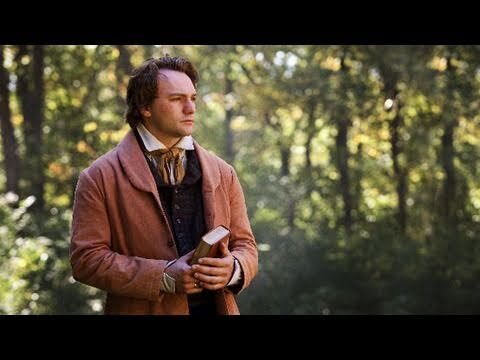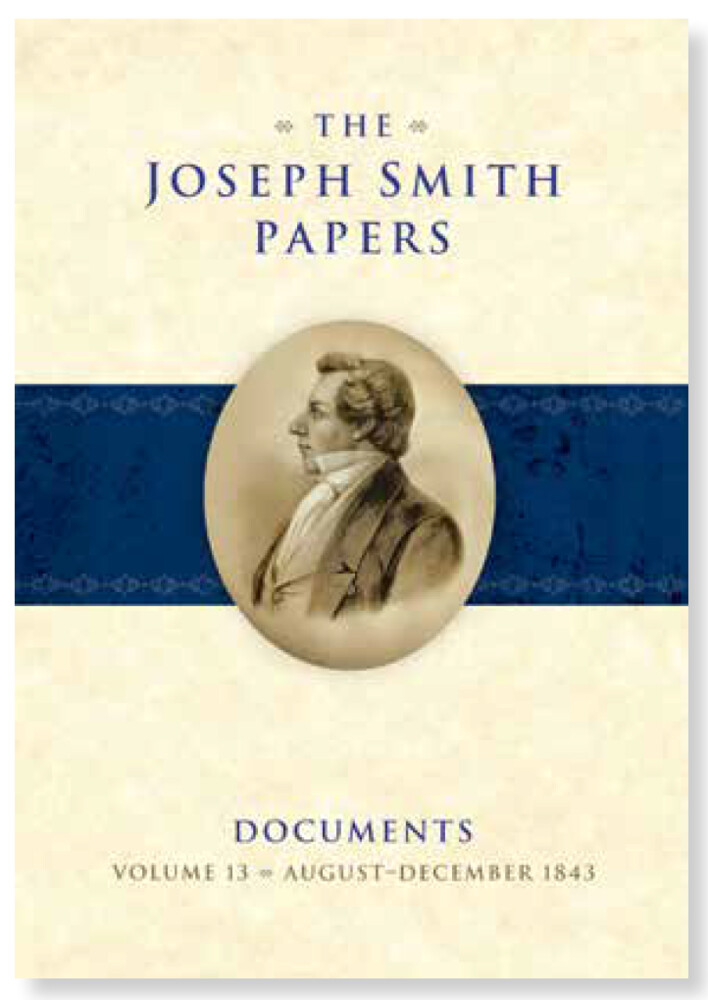On August 29, 1843, David Nye White, the senior editor of the Pittsburgh Gazette, visited Nauvoo and spent an hour at Joseph Smith’s home visiting with the Prophet. After their visit, White wrote a letter to his newspaper recounting his interview with Joseph.
White’s account of this interview is one of ninety-eight documents in the latest volume of The Joseph Smith Papers—Documents, Volume 13.
The topics of conversation in the interview ranged widely between the unfinished Nauvoo Temple, politics, Joseph’s experiences in Missouri, and his claim to revelation. White’s visit and published interview represent an important moment in Joseph Smith’s life. He greeted White in the recently completed Nauvoo Mansion, which Joseph ran as a hotel to entertain and house the increasing number of curious visitors arriving in Nauvoo to meet the Prophet and see the city of the Saints.
Joseph remained a figure of national interest and controversy. Dozens of newspapers reprinted White’s interview with Joseph, satisfying the curiosity of readers across the United States who were hungry for rumors or news about the controversial Latter-day Saints and their leader. However, for Latter-day Saints today, White’s interview with Joseph is most notable for providing us with a detailed account of Joseph Smith’s First Vision.
Joseph’s claims to revelation were not foremost on the mind of the newspaperman when he sat down to breakfast with the Prophet. A controversial election had recently taken place in Nauvoo, and White wanted to hear Joseph’s explanation as well as learn his opinions on the leading political figures and parties of the day.
Although Joseph answered White’s questions, he soon turned the topic away from politics and toward revelation, clarifying that he “never asked the Lord any thing about politics.” Joseph explained to the curious but dismissive reporter that the Lord “has promised to give us wisdom, and when I lack wisdom I ask the Lord, and he tells me.” In fact, Joseph said that “when he was in a ‘quandary,’ he asked the Lord for a revelation.”
Joseph acknowledged that sometimes his prayers went unanswered and he had to follow “the dictates of his own judgment” as best he could. Nevertheless, Joseph repeatedly affirmed that the Lord had spoken to him. “The Lord does reveal himself to me,” the Prophet testified. “I know it. He revealed himself to me first when I was about fourteen years old, a mere boy.”
What followed in the newspaper account is a story that is familiar to all Latter-day Saints. The young Joseph, inspired by James 1:5, went into the woods behind his home to ask what church he should join. Two personages appeared to him in a light and told him not to join any of the churches.
In the years since his vision, Joseph had shared his story with close friends, family, and occasionally curious visitors. He first committed his history to paper in 1832 and later wrote the account that most Latter-day Saints are familiar with from the Pearl of Great Price in 1838. While some details vary from account to account, Joseph’s story remained remarkably consistent. Because the accounts were recorded by different scribes at different times, elements of the story were sometimes emphasized or left out.1
From the account Joseph gave to the Pittsburgh newspaper editor, we learn details that were not captured elsewhere. While Joseph always insisted that his prayer was inspired by James 1:5, in this account Joseph explained how he came across that verse. He told White that while he was thinking about what church to join, he “opened the Testament promiscuously on these words,” meaning that while Joseph was struggling to know what to do, he opened a Bible at random and found that verse.
Joseph also shared with the newspaperman that the spot he chose for his prayer was a clearing where had had been chopping wood as part of his chores. In fact, Joseph told him that he had knelt next to “the stump where I had stuck my axe when I had quit my work.”
One of the final details that Joseph shared was that after the vision, he was sprawled on his back and felt too weak to move. As Joseph explained, “it was sometime before my strength returned.”
Beyond his First Vision, Joseph shared some of his other revelatory experiences with the reporter. For example, shortly after he and other church leaders were arrested in 1838 by the Missouri militia, the Prophet “heard a voice which said, ‘Joseph, fear not, you and all your friends shall be delivered without harm, and shall yet stand upon the hills of Zion.” At the time, the militia was threatening to kill the prisoners; this revelation brought comfort to his companions and their families. Despite the threats from the Missourians, Joseph testified that ultimately the revelation “was fulfilled to the letter.”
Despite hearing the Prophet’s testimony and history, David White left Nauvoo unconvinced of Joseph’s claims to revelation. In the letter he wrote to his newspaper, White dismissed Nauvoo as a place of “vain and unhappy delusions.” Their conversation had apparently been quite lighthearted at times, with Joseph occasionally cracking jokes about himself or major political figures, leading White to think that Joseph laughed too much and was too “light and trifling” to be a prophet.
Although he repeated much of what Joseph had told him, presumably copying from notes he made during the interview, White’s account of Joseph’s words was tinged with sarcasm and disdain. The Nauvoo Neighbor, edited by apostle John Taylor, condemned White’s account when it was published, noting that it was yet another example of the Saints being “praised to our faces, and slandered behind our backs.”2 The Neighbor also denounced the dozens of newspapers across the country that had republished White’s letter.
Although it was condemned by the Neighbor, White’s account of his August 1843 interview with Joseph Smith is an important historical source for understanding the First Vision and Joseph Smith. The interview is one of eight independent detailed accounts of Joseph Smith’s First Vision that were recorded during Joseph’s lifetime. While most of these accounts were produced by Joseph Smith or under his direction, this is the only surviving account from someone who heard Joseph tell his story and did not believe it.
Although it is tinged with hostility and sarcasm, this account helps us better understand what the First Vision meant to Joseph Smith. At the bare minimum, it provides us with unique details that render a more complete understanding of the circumstances surrounding the event. But more profoundly, the account demonstrates that Joseph Smith used his vision as a teaching tool, similar to how missionaries use it today. When questioned about his claim to revelation, Joseph told his story and testified that the Lord spoke to him. He knew it.
Notes
1. For a summary and transcription of the detailed accounts of Joseph Smith’s First Vision, see https://www.josephsmithpapers.org/site/accounts-of-the-first-vision.
2. Letter to the Editor, Nauvoo Neighbor, 27 Dec. 1843, p. [3].


